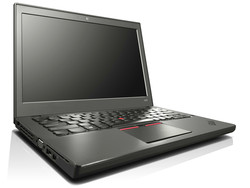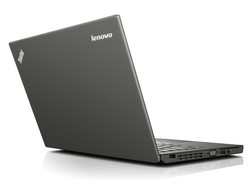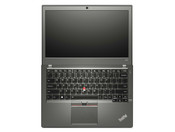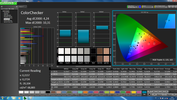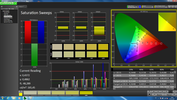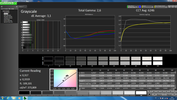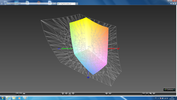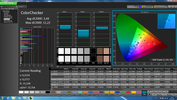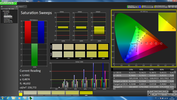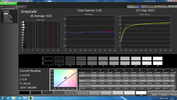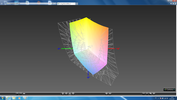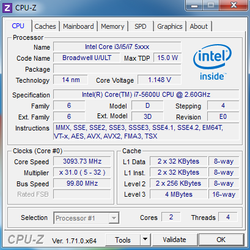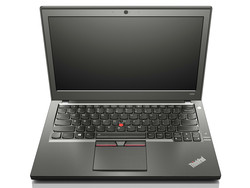First Impressions: Lenovo ThinkPad X250 Notebook Review

For the original German review, see here.
The X200 line belongs to the most popular ThinkPads by far for many users despite its small size (or perhaps for just that reason). Potential buyers had to wait longer than usual for the successor of the X240 introduced in September 2013. The delayed launch of Intel's Broadwell processors presumably also upset the plans from manufacturers like Lenovo.
The new ThinkPad X250 has been available in stores for a few days now and again prepares itself for the battle for the crown of the subnotebook category. The prices, depending on the configuration, start at around 950 Euros (~$1072) for the basic model with a Core i3 CPU, 4 GB of RAM and a 500 GB SSHD; buyers who are interested in the premium model with a Core i7 chip, twice the memory capacity and SSD, and need a WWAN module on top will quickly close in on 2000 Euros (~$2257). Pupils, students and teachers can take advantage of generous education discounts: Our well-equipped review sample (Core i7-5600U, 8 GB of RAM, 360 GB SSD, no OS) is available for a price starting at 1300 Euros (~$1467).
In the following article, we will describe our first impressions of the X250 to bridge the waiting time for the upcoming, usual in-depth review.
First Impressions
Unlike the ThinkPad X240 where Lenovo made some massive modifications to the casing, the changes of the 2015 generation are barely visible even for experts. The X250 is a few grams lighter with a weight of 1.43 kilograms, but a few tenths of a millimeter thicker with a height of 20.3 millimeters compared with its precursor. That is, however, virtually unseen in a direct comparison. Consequently, the mechanical qualities of the chassis have not changed much either. The base unit and display still compel with an overall high stiffness, although some minor weak points like the rather pliable area above the SmartCard reader have not been rectified. Our critical eyes did not find many more points for complaint. The entire construction seems functional and impeccably built. The employed fiberglass-reinforced plastic is perhaps not really exquisite, but it is resistant and long-lasting. As always, solid metal hinges ensure a firm hold on the lid.
The X250 does not have any surprises waiting in terms of interface diversity, either. The subnotebook can boast with two USB 3.0 ports, VGA and Mini-DisplayPort that are distributed on the casing's left and right sides. It is great that the classic Ethernet socket has not been axed - users who can only connect to their company's network via cable will be grateful to Lenovo.
Input Devices
After some initial resentment, most ThinkPad users will now have accommodated to the chiclet keyboard introduced only a few years ago. The keyboard's crisp stroke, generous drop and rich, mechanical typing feel has not made it to the ultimate benchmark for the competition among many users for no reason.
The multiply reworked touchpad was a considerably bigger controversial point for discussion. Lenovo has now taken a step backwards with it. Rather than using a fully integrated ClickPad solution, a unit where at least the TrackPoint keys are implemented as dedicated buttons is installed. The touchpad, unfortunately, still does not have separate keys, which is an ergonomic drawback compared with alternatives like the Latitude E7250 in our opinion. Nevertheless, the X250 has overall made a clear step forward here.
Display
Depending on the configuration, the 12.5-inch screen has a resolution of 1366x768 pixels (TN/IPS screen) or 1920x1080 pixels (IPS screen), which results in a pixel density of 125 and 176 ppi respectively. The Full HD model in our hands is also available in a (semi) matte version that not only boosts the purchase price but also the casing's thickness and weight marginally.
The very high-contrast screen with a brightness of 357 cd/m² makes an excellent quality impression. Owing to the IPS technology, the image barely changes even in slanted viewing angles. Colors and grayscale levels are always displayed faithfully and vividly. The screen is already relatively accurate in state-of-delivery so that calibrating will hardly improve things. Professional users from the fields of graphics editing/photography will, however, criticize the very limited color space, which only covers 58% of the sRGB and 42% of the AdobeRGB standards.
| |||||||||||||||||||||||||
Brightness Distribution: 81 %
Center on Battery: 396 cd/m²
Contrast: 902:1 (Black: 0.44 cd/m²)
ΔE ColorChecker Calman: 4.2 | ∀{0.5-29.43 Ø4.79}
ΔE Greyscale Calman: 3.1 | ∀{0.09-98 Ø5}
65.5% sRGB (Argyll 1.6.3 3D)
42% AdobeRGB 1998 (Argyll 1.6.3 3D)
45.71% AdobeRGB 1998 (Argyll 3D)
65.8% sRGB (Argyll 3D)
44.14% Display P3 (Argyll 3D)
Gamma: 2.6
CCT: 6246 K
| Lenovo ThinkPad X250-20CLS06D00 HD Graphics 5500, 5600U, Intel SSD Pro 2500 Series SSDSC2BF360A5L | Dell Latitude 12 E7250 HD Graphics 5500, 5300U, Samsung PM851 Series MZMTE256HMHP | Asus ASUSPRO Advanced BU201LA-DT036G HD Graphics 4400, 4210U, Toshiba MQ01ABF050 | Lenovo ThinkPad X240 HD Graphics 4400, 4600U, Samsung SSD 840 250GB MZ7TD256HAFV | |
|---|---|---|---|---|
| Screen | -15% | -10% | -27% | |
| Brightness middle (cd/m²) | 397 | 360 -9% | 433 9% | 377 -5% |
| Brightness (cd/m²) | 357 | 330 -8% | 396 11% | 348 -3% |
| Brightness Distribution (%) | 81 | 81 0% | 80 -1% | 84 4% |
| Black Level * (cd/m²) | 0.44 | 0.53 -20% | 0.47 -7% | 0.518 -18% |
| Contrast (:1) | 902 | 679 -25% | 921 2% | 728 -19% |
| Colorchecker dE 2000 * | 4.2 | 5.58 -33% | 5.56 -32% | 6.85 -63% |
| Greyscale dE 2000 * | 3.1 | 3.98 -28% | 4.92 -59% | 6.48 -109% |
| Gamma | 2.6 85% | 2.21 100% | 2.48 89% | 2.75 80% |
| CCT | 6246 104% | 6192 105% | 6054 107% | 6379 102% |
| Color Space (Percent of AdobeRGB 1998) (%) | 42 | 42.2 0% | 41 -2% | 41 -2% |
| Color Space (Percent of sRGB) (%) | 65.5 |
* ... smaller is better
Performance
The new Broadwell processors are most certainly one of the biggest highlights of the ThinkPad X250. Intel markets them as the fifth generation of the Core architecture. While the architectural innovations are rather slim compared with Haswell, the more refined 14-nanometer build process promises a considerably higher energy efficiency and more power despite the same consumption.
Depending on the benchmark, the Core i7-5600U (2.6 - 3.2 GHz, 15 watts) beats the Core i7-4600U (2.1 - 3.3 GHz, 15 watts) in the precursor by approximately 5 to 20%. However, major differences are primarily seen when both CPU cores are loaded for a longer time. Although the performance plus is not really noticed in everyday use, no-one will decline this advantage seeing that this upgrade is more or less for free.
The HD Graphics 5500 (24 EUs, 300 - 950 MHz) now replaces the integrated HD Graphics 4400 (20 EUs, 200 - 1100 MHz). Besides new features like DirectX 11.2, the GPU also provides a performance boost of approximately 20 to 30%. Too bad that Lenovo still only installs one DDR3 slot - filled with 1 x 8 GB of DDR3L-1600 in our case - because the memory controller only operates in single-channel mode. Other manufacturers rely on two slots or solder a specific RAM capacity on the board making dual-channel mode possible. That can increase the performance of 3D applications by up to 25%, although the CPU's performance barely benefits from the additional bandwidth.
| 3DMark | |
| 1920x1080 Fire Strike Score (sort by value) | |
| Lenovo ThinkPad X250-20CLS06D00 | |
| Dell Latitude 12 E7250 | |
| Asus ASUSPRO Advanced BU201LA-DT036G | |
| Lenovo ThinkPad X240 | |
| 1280x720 Cloud Gate Standard Score (sort by value) | |
| Lenovo ThinkPad X250-20CLS06D00 | |
| Dell Latitude 12 E7250 | |
| Asus ASUSPRO Advanced BU201LA-DT036G | |
| Lenovo ThinkPad X240 | |
| 1280x720 Ice Storm Standard Score (sort by value) | |
| Lenovo ThinkPad X250-20CLS06D00 | |
| Dell Latitude 12 E7250 | |
| Asus ASUSPRO Advanced BU201LA-DT036G | |
| Lenovo ThinkPad X240 | |
Emissions
System Noise
There is nothing to complain about here. The ThinkPad mostly operates noiselessly in both idle mode and during low load (office, browsing) because the device's fan is completely inactive. However, the device does not get unduly loud during full load, either. We did not measure more than 34 dB(A) even in this extreme scenario. At the same time, the temperatures of the casing's surface and the processor remained within a very low range so that there should not be any restrictions even in midsummer.
Noise level
| Idle |
| 29 / 29 / 30.3 dB(A) |
| Load |
| 33.4 / 33.7 dB(A) |
 | ||
30 dB silent 40 dB(A) audible 50 dB(A) loud |
||
min: | ||
(±) The maximum temperature on the upper side is 43.6 °C / 110 F, compared to the average of 35.9 °C / 97 F, ranging from 21.4 to 59 °C for the class Subnotebook.
(±) The bottom heats up to a maximum of 42.3 °C / 108 F, compared to the average of 39.3 °C / 103 F
(+) In idle usage, the average temperature for the upper side is 25.4 °C / 78 F, compared to the device average of 30.8 °C / 87 F.
(+) The palmrests and touchpad are cooler than skin temperature with a maximum of 27.5 °C / 81.5 F and are therefore cool to the touch.
(±) The average temperature of the palmrest area of similar devices was 28.2 °C / 82.8 F (+0.7 °C / 1.3 F).
Energy Management & Battery Runtime
The power consumption of the ThinkPad X250 is roughly one to two watts lower than the identically configured (with exception of the lack of a WWAN module) X240 precursor in idle mode. The opposite is true during load. The new model consumes approximately two watts more with 28.6 watts here. The consumption even skyrocketed up to 44.3 watts for a moment when we initialized our stress test, only to drop to below 30 watts after TDP-related throttling set in.
The runtimes will likely only differ marginally with the same battery capacity - the 48 Wh (24 Wh internal, 24 Wh additional battery) in our review sample should be enough for approximately 6 hours of Wi-Fi browsing or video playback in routine use.
| Off / Standby | |
| Idle | |
| Load |
|
Key:
min: | |
Verdict
Without wanting to anticipate the outcome of our final verdict: A solid development of the X240 is in the making with the ThinkPad X250. Lenovo has also addressed some of the points of criticism in the precursor (keyword: touchpad). Whether that alongside the higher performance justifies buying seems questionable - the differences are likely not profound enough for that. However, the X250 might be an interesting choice for newcomers or users of older models (X220, X230). We will examine how the ThinkPad fares in competition with other rivals, such as the recently tested Dell Latitude E7250, in our in-depth review coming soon.




